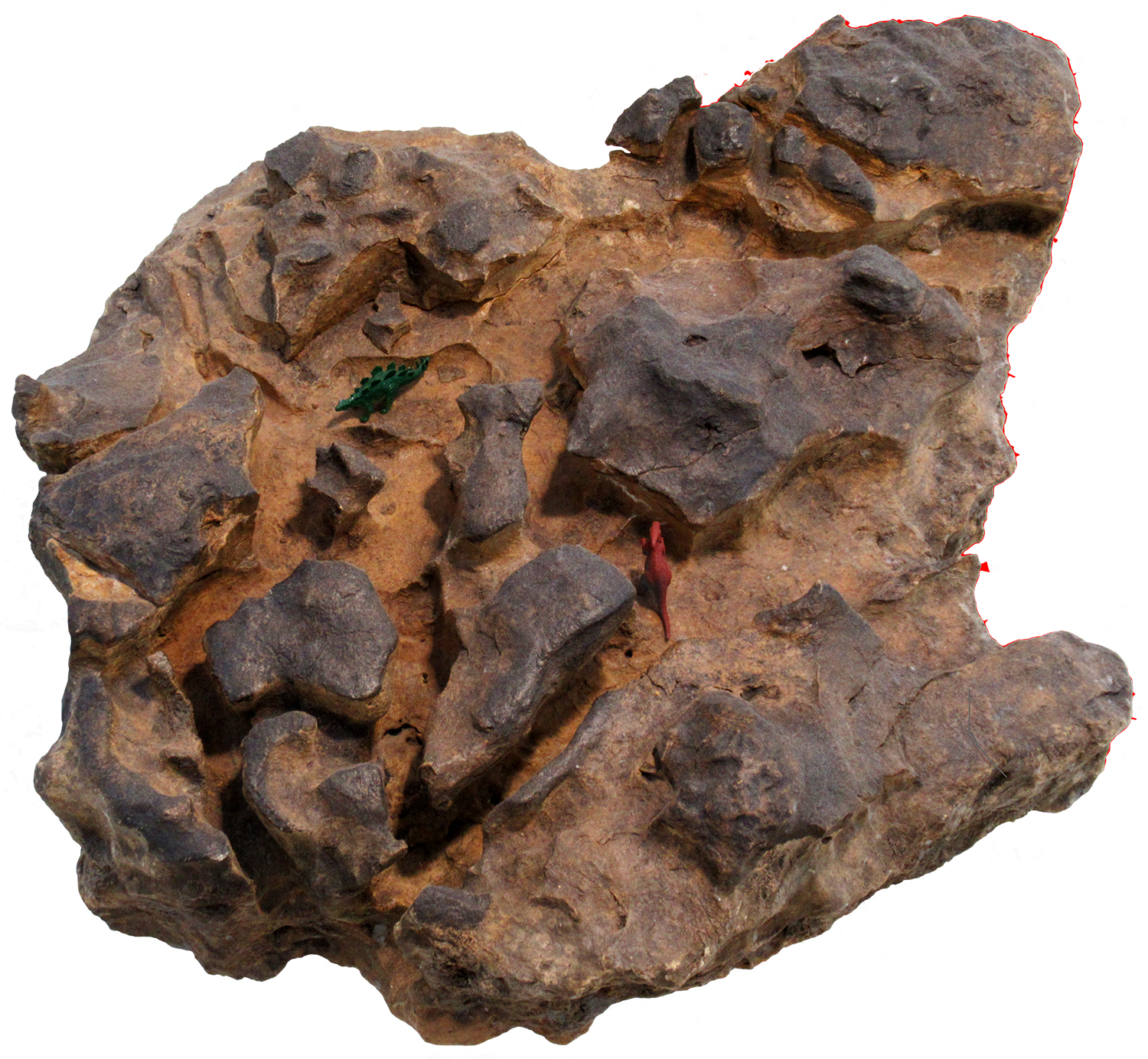
This block came from a quarry in southeastern Minnesota and was part of the Spillville Formation, a fossil-bearing carbonate unit that extends from Iowa to Minnesota. The Spillville Formation originally formed as carbonate muds deposited on the floor of a widespread shallow marine sea that lapped onto the flanks of the North American craton during the Eifelian stage of the Middle Devonian epoch (~393 to 388 MYA). Unconformities, or breaks in the geologic record, underlie and overlie the Spillville strata.
The interwoven pattern of small channels across the rock’s surface resulted from groundwater dissolution of the carbonate rock. In turn, these miniature subterranean channel systems greatly affect groundwater movement through the subsurface Spillville Formation. Although people often think of groundwater as occurring in large subterranean pools and streams, more often groundwater flow occurs as slow movements along grain or crystal boundaries within bedrock. Consequently, ground water flow rates are usually orders of magnitude slower than surface streamflow. In many bedrock units, flow rates may be 3 decimeters (1 foot) per year, or even per decade. Even in porous sand, groundwater flow rates are typically measured in meters per year. However, in this rock groundwater flow was concentrated along a bedding surface and the moving groundwater dissolved the surrounding rock to form and enlarge open channels. As a result of these dissolution-enlarged channels, groundwater flow through the Spillville formation is measured in kilometers per year, rather than decimeters.
Such rapid flows rates are important in terms of pollutant dispersal. If groundwater moves slowly through microscope boundaries in bedrock, many pollutants are physically filtered out and the spread of soluble contaminants is as slow as the groundwater flow. That makes it easier to track or control pollutants’ spread. However, dissolution channel flow, as in the Spillville Formation, allows contaminants to spread much more easily and to greater distances. Hence, preventing pollutants from entering such channelized groundwater systems is crucial, as once they arrive, pollutants can spread easily to contaminate drinking water sources of distant communities.
Many surface streams diverge or branch out, but these channels come together and interweave much as braided streams do. An anastomosis is a term used for a connection between things that normally diverge, so the channels here have an anastomosing pattern. The rock is displayed upside down, so the original channels developed along a bedding plane and extended up into the overlying carbonate rock.